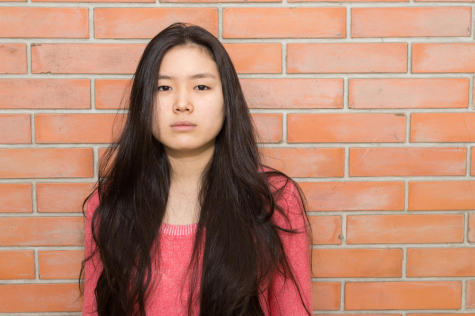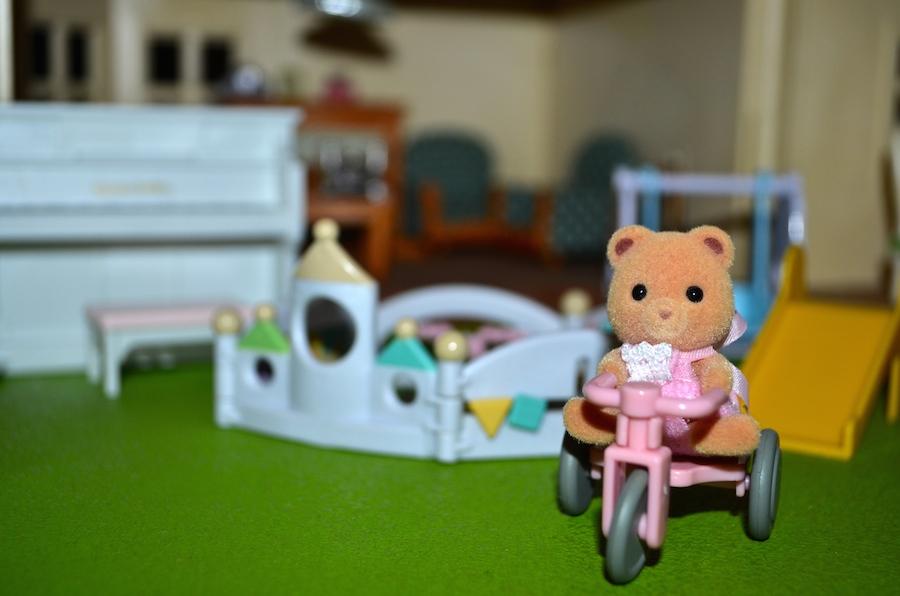It’s about the small things. It’s about survival.
On my bookshelf lies one of my most prized figurines, the Sylvanian Families Beechwood Light Mansion. I’ve got it all figured out. The Smiths, my family of biped cats, consists of Charles and Katherine, the two parents, and four children: Clara and John, both in high school, and Abraham and Noah, twin babies. They live in a cream colored home with a white piano, fireplace, and real lights in all bedrooms.
On my next trip to Japan, I’m buying another family, possibly the black hedgehogs, and the Regency Hotel, which will be their home. I can’t get enough, from the furry toilet covers to the microscopic pages of real sheet music on the piano; the amount detail in each piece is amazing. As a child, I’d often find myself gaping at the set with intense fascination for hours on end, which raises an interesting question: why are we so drawn to small, delicate things?
Albeit at different levels, dolls, miniatures (don’t tell me you’ve never gone to the Main Office just to stare at the classrooms and cars in Graded’s 20/20 model), Agnes from Despicable Me, kittens, and babies all provoke a similar sense of enchantment and wonder. Cuteness (or kawaii in Japan), the word that best describes the items above,is an interesting concept. It is not pretty nor graceful. It evokes fragility, silliness, and clumsiness and often inspires the desire to touch and squish. And we’re obsessed with it. The emphatic reactions of grown men and women to Asian toddlers, mini food, you name it, are often startling.
Many of us are driven by the power of kawaii to act in a certain way, buy specific products, or even dress in a particular manner (take Japan as an extreme example). Marketers take full advantage of that fact: Duracell and Michelin use their mascots as a friendly way to approach customers. Why is this so?
In a 2006 New York Times article, Natalie Angier offers an explanation, suggesting that our fixation with tiny things, large eyes, and clumsy gestures has to do with survival. According to researchers, we are programmed to feel a sense of endearment and protection towards anything vulnerable or baby-like, which makes total sense, for our offspring wouldn’t survive otherwise. My desire to punt a crying baby out of a window is (mostly) overridden by that fuzzy feeling enveloping my heart as its huge eyes stare into my face. I’m pretty sure I’m not the only one.
And there’s more. The areas in our brain that trigger these emotions, scientists suggest, are the same ones responsible for releasing pleasure during sex, good meals, or drugs, which explains how a crappy YouTube video of some kid getting his finger bit by his fat baby brother can get millions of views in a matter of weeks. Consequently, anything possessing the right “cute” characteristics can also trigger a positive response.
The nearly universal association of babies and small children with goodness, joy, and purity seems like an obvious, unquestionable truth. But the way we respond to anything remotely cute or baby-like is actually the product of evolution and adaptation for survival, just like love is an instinctive feeling that stimulates reproduction. The fact that nearly all of those feelings, even perhaps our moral instincts, are simply a sort of “programming” that enhances our survival is pretty mind-blowing, and sometimes upsetting. But let’s not go there. Whatever it is, it is the source of immeasurable joy. I’m quite happy with my Sylvanian Family toy set for now, so let’s not spoil it.
Source: nytimes.com

MC Otani is an Editor in Chief of The Talon. Besides writing, her passions include interpretive dance, tulle, and manatees. She hopes to one day become...











